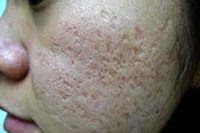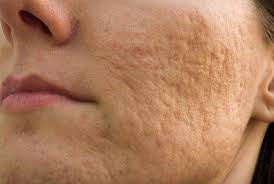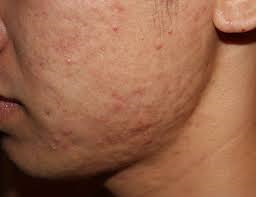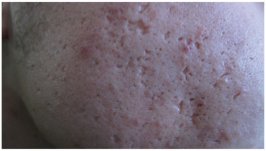Acne Scars
Whether it is from our puberty or from recent acne outbreaks, acne scars are a painful reminder of bad skin. Whenever the acne occurs, it's very common to be left with scarring from excess collagen when those pimples heal. Acne scarring tends to occur more commonly in the more severe forms of acne with large nodules and inflammation. If treated, the overall prognosis for persons with acne is good, however; in some cases it can lead to long lasting physical scarring and psychosocial impairment.
How are acne scars formed?
To
understand how acne or pimple scars are formed it’s important to first understand how acne forms. Acne develops as a
result of plugged follicles. In these conditions the bacteria can grow inside
and can cause inflammation, leading to inflammatory lesions in the dermis. This
inflammatory reaction in the dermis results in redness and may eventually cause
permanent scarring or hyperpigmentation.
Types of acne scar
Typical acne scarring tend to fit into the following two major categories:
1. Depressed acne scar
Most people who scar after the acne clears see
soft, saucer-like depressions or pits on their skin. Sometimes the skin loses
its underlying support and develops a wavy texture. As we age, these scars
often become even more noticeable. There are three types of depressed acne:
Icepick Scars:
Icepick
scars are the most common type of mark left behind by acne. Icepick scars are
deep, narrow scars characterized by the pits they form in your skin. These
facial blemishes are often the result of persistent acne.

Boxcar Scars:
Similar to
chickenpox scars, boxcar scars have angular, well-defined edges and can usually
be found on your temples or cheeks.

Rolling Scars :
Indicated by
their wave-like appearance on your skin’s surface, rolling scars are wide and
shallow indentations left behind by pimples. Rolling scars are caused by bands
of tissue developing between the epidermis and the skin tissue below, pulling
your skin down in a scar that leaves rolls on your face.
2. Raised acne scar
Once
acne clears, some people see raised scars on their skin. With time, these scars
may become larger and more noticeable. Some raised scars itch. They can even be
painful and tender. There are two types of raised acne-scars:

Keloid scars
Keloid scars
can expand beyond the original pimple site as well, and can feel rubbery and
firm and can even itch. Keloids are more common
in people of African, Asian, or Latino descent. Keloids can develop anywhere on
the skin, but most form on the earlobe, chest, shoulders, or upper back.

Hypertrophic scars
Unlike other
acne scarring, hypertrophic scars are raised above the surface of your skin and
remain within the boundary of the original blemish. The good news about these
types of scars is that they can reduce in size as time goes on.
Home › Acne Scars
Tags
severe acne, nodules, acne scarring treatment
Irresistible Acne Remedies. This free newsletter is delivered monthly, straight to your INBOX. It covers all new pages since the last issue. Sign up here...




New! Comments
Have your say about what you just read! Leave me a comment in the box below.